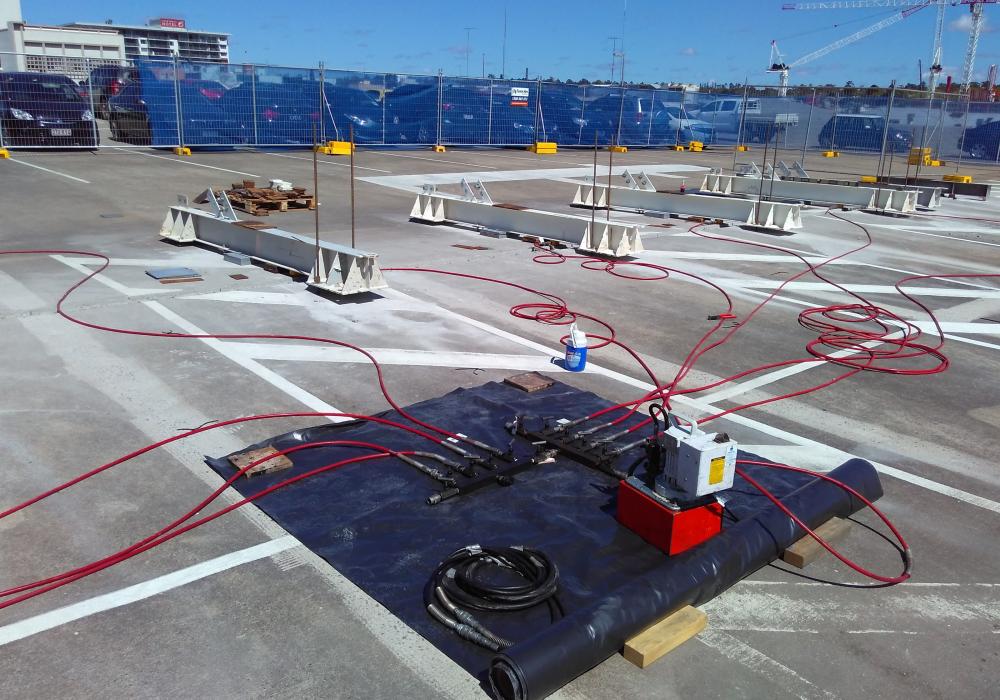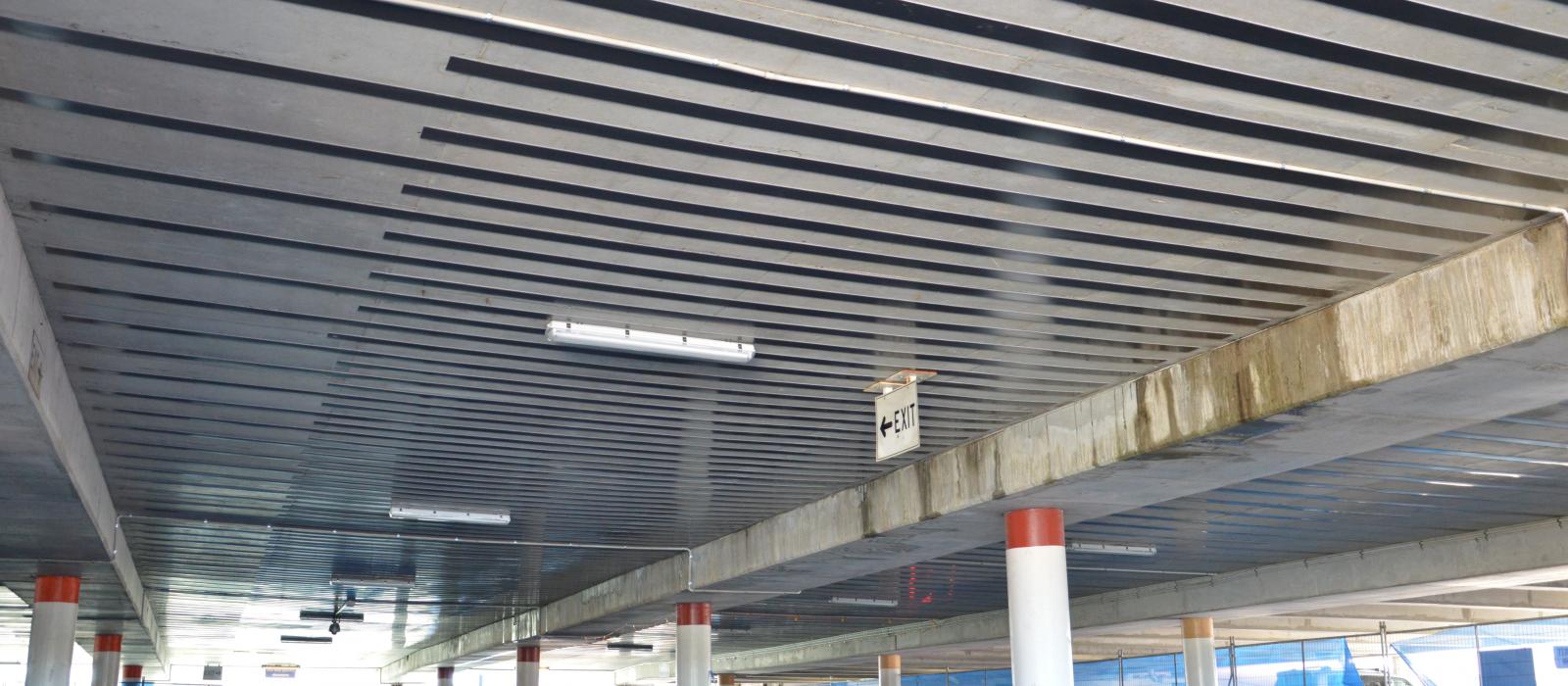Neil Street Car Park (Toowoomba Bus Interchange) Structural Rectifications
Neil Street Car Park (Toowoomba Bus Interchange) Structural Rectifications
Constructed in 1989 and currently owned and operated by Toowoomba Regional Council, the Toowoomba Bus Station offers both local and long-distance bus services. The structure is made up of three levels, with the bus station on ground level and two levels of car parking.
The Toowoomba Council became aware of concrete spalling issues throughout the structure in 2005 and implemented a repair and inspection program to address the issues. Concrete defects continued to recur however, indicating that root causes of these defects may have been more complex than originally assumed. Further investigations were undertaken including structural checks of key elements which revealed a number of deficiencies in the existing structure. A resulting rehabilitation strategy was developed and implemented on-site by Freyssinet Australia.







